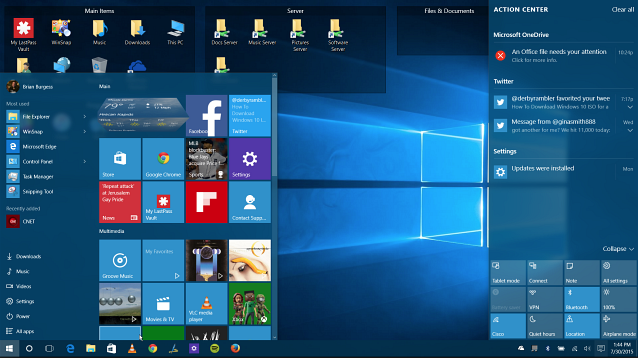
Windows 10: Too many cores hinder performance?
Windows 10 suffers from bugs that slow down the operation of the OS when it needs to run on machines with many processor cores.
More cores are not always better when it comes to computing. One could imagine that the acquisition of a powerful machine with 24 cores would do wonders regarding performance.
But on his blog, programmer Bruce Dawson is not as optimistic…
He explains why he was experiencing unexplained slowdowns on his machine, bugs that he did not find when he changed configuration by switching to another OS or running Windows 10 on a more traditional machine.
Bruce Dawson currently works for Google and more specifically for the Chrome team. But as explained in his biography, he also worked in the past for Microsoft, mainly in the field of debugging and performance improvement. With such a pedigree, the programmer, therefore, sought to understand a little more in detail what caused these unexplained slowdowns on his machine.
To do this, he examined the operation of the processor via the information collected by Windows and performance analysis tools. Analyzes that allowed him to refine his diagnosis: a particular process related to the closure of ongoing processes and called NtGdiCloseProcess.
Without going into the technical and complicated details, this process fails to properly exploit multiple cores to duplicate its spots, and these are treated serially by a single heart. A non-optimal use of the memory, which has the effect of causing significant slowdowns of the machine when it has to close many processes at the same time.
To test this phenomenon, the researcher has thus created a script capable of creating on the fly more than 1000 processes, then wait a few seconds before closing them abruptly. The behavior differs dramatically when Bruce Dawson retries the experience on Windows 7, which uses all the cores to run the processes.
For the researcher, this phenomenon illustrates a phenomenon that attempts to explain the limits inherent in the distribution of calculations on several hearts and the “bottleneck” effect of certain spots that can not be duplicated.
As Bruce Dawson notes, frequent machine reboots can help minimize the consequences of this bug. The researcher added that he had informed Microsoft of this problem and that the teams are investigating the problem. One can, therefore, hope for a resolution of it in a future patch.
